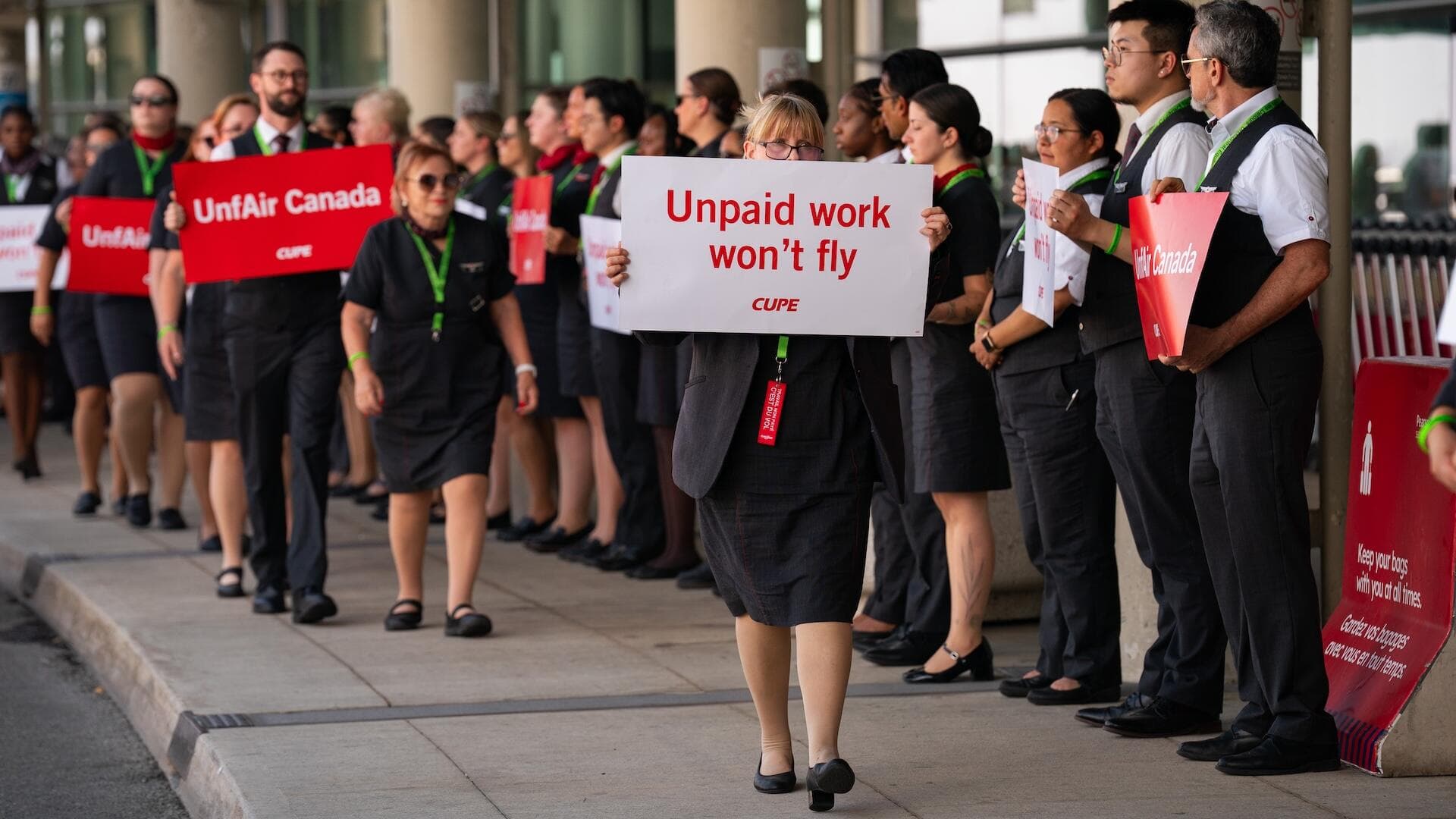Government Intervention Ends Air Canada Strike Impacting 130,000 Daily Travelers

Ottawa – A significant strike by Air Canada flight attendants, which disrupted travel for an estimated 130,000 passengers daily, concluded following a directive from the Canadian government for binding arbitration. The resolution of the labor dispute has prompted journalist Rupa Subramanya to assert that the strike was not an isolated incident but rather "a snapshot of the Canadian economy," a theme she has consistently highlighted in her reporting. Her latest analysis appears in this week's edition of her Canada newsletter for The Free Press.
The dispute involved Air Canada and its flight attendants, represented by the Canadian Union of Public Employees (CUPE), primarily over issues of wages and compensation for "groundwork" duties performed before and after flights. The strike, which began around August 16, 2025, led to the suspension of approximately 700 daily flights, causing widespread travel chaos during the peak summer season.
Prime Minister Mark Carney's government, through Jobs Minister Patty Hajdu, intervened on August 16, 2025, invoking Section 107 of the Canada Labour Code to mandate binding arbitration and order the flight attendants back to work. While an agreement to end the strike was announced early on Tuesday, August 19, the union had initially defied the back-to-work order, signaling the intensity of the negotiations. Air Canada stated that full service restoration could take "a week or more."
In her Canada newsletter, Rupa Subramanya, a writer based in Ottawa for The Free Press, elaborated on her perspective. She wrote: > "The Air Canada strike wasn’t an outlier. It’s a snapshot of the Canadian economy. I’ve been banging on this drum for a while." Subramanya's work often focuses on the intersection of economics, politics, and public policy in Canada, frequently critiquing what she perceives as systemic issues within the nation's economic structure, including barriers to entry and protection for incumbent industries.
The resolution aims to stabilize air travel, but Subramanya's commentary underscores a broader debate about the Canadian economy's resilience and underlying structural challenges. The strike's significant impact on travelers and the swift government intervention highlight the critical role of the airline industry and the complexities of labor relations within Canada's economic landscape.